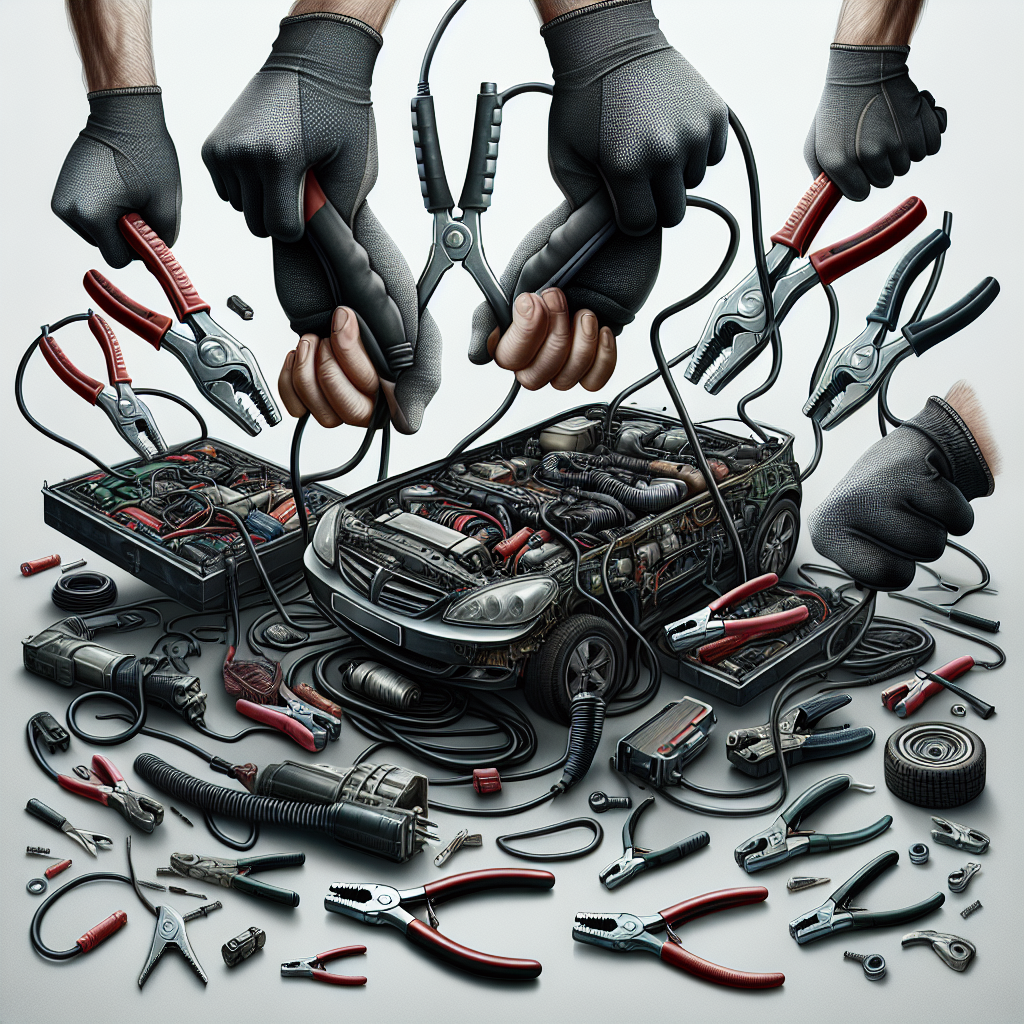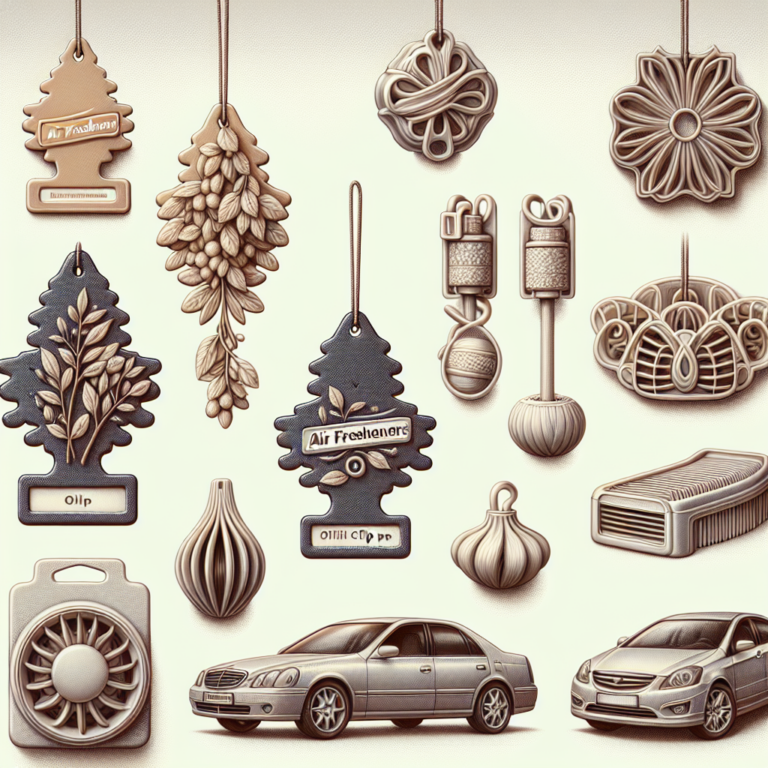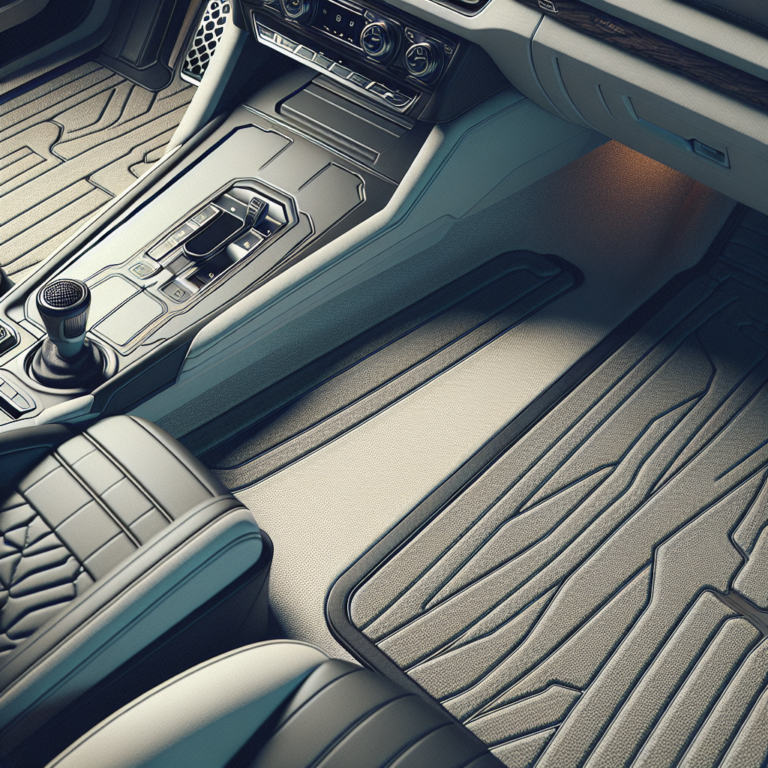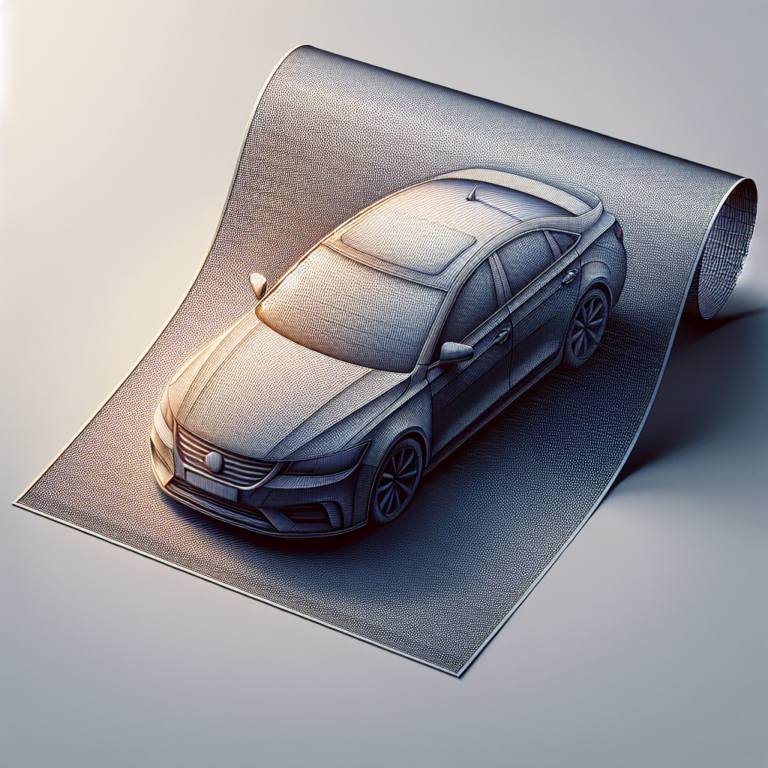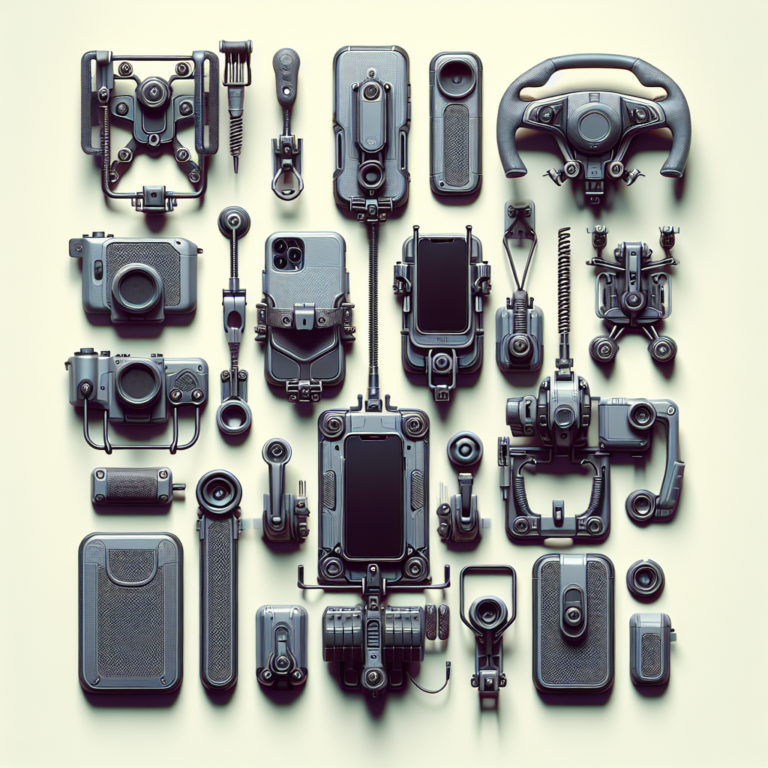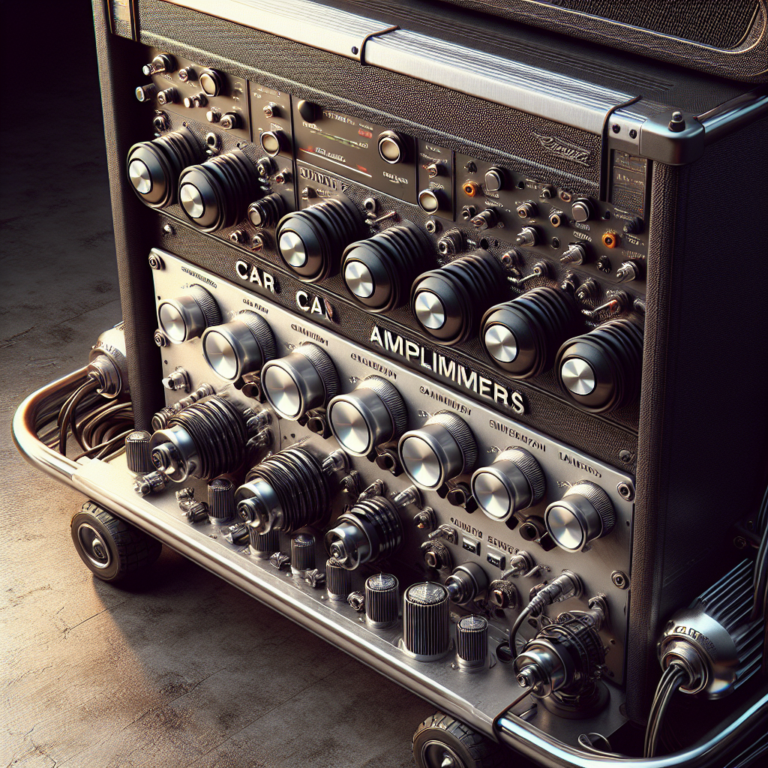The Importance of Car Jump Starters
Car jump starters are essential tools for every car owner, providing a quick and convenient solution to tackle dead batteries. Whether you’re stranded on the side of the road or need to jump-start your vehicle in your own driveway, having a jump starter can make all the difference in getting your car back on the road.
Why Every Car Owner Should Have a Jump Starter
-
Emergency Preparedness: Car batteries can die unexpectedly, leaving you stranded with no other options. Having a jump starter in your trunk ensures that you’re prepared for such emergencies, allowing you to jump-start your car without relying on external assistance. This can save you time, money, and the hassle of waiting for a tow truck or a Good Samaritan to come to your aid.
-
Independence and Convenience: With a jump starter, you gain the independence to jump-start your vehicle on your own terms. You no longer have to wait for someone else to assist you or rely on the availability of nearby jumper cables. A jump starter gives you the freedom to take control of the situation and get your car running again without any hassle.
-
Versatility: Car jump starters are not only designed for jump-starting dead batteries but often come with additional features that make them versatile tools. Many jump starters include USB ports to charge your electronic devices, built-in flashlights for emergency situations, and even air compressors to inflate tires. These added functionalities make jump starters a valuable asset to have in your car.
Benefits of Using Car Jump Starters
-
Safety: Jump starting a car using traditional methods, such as jumper cables, can be risky, especially if you’re not familiar with the process. Car jump starters eliminate the need for another vehicle, reducing the risk of electrical mishaps or damage to either vehicle. They are designed to provide a safe and reliable jump-starting experience.
-
Ease of Use: Car jump starters are designed to be user-friendly, even for individuals with limited technical knowledge. They come with clear instructions and are often equipped with intuitive features, such as LED indicators and audible alarms, to guide you through the jump-starting process. This makes it easy for anyone to use a jump starter effectively.
-
Portability: Jump starters are compact and portable, allowing you to carry them in your car without taking up much space. They are lightweight and often come with a carrying case or handle for easy transportation. This portability ensures that you have a reliable jump-starting solution wherever you go.
By understanding the importance of car jump starters and the benefits they offer, you can make an informed decision to add this essential tool to your car accessories. Remember to choose a jump starter that suits your specific needs, considering factors such as power and capacity, portability, and safety features. With a jump starter in your car, you’ll have peace of mind knowing that you can quickly and efficiently handle dead battery situations.
Understanding Car Jump Starters
In order to make an informed decision about which car jump starter is right for you, it’s important to have a clear understanding of how they work and the different types available in the market.
How Car Jump Starters Work
Car jump starters are portable devices designed to provide the necessary power to start a vehicle with a dead or weak battery. They essentially act as an external power source, allowing you to jump-start your car without the need for another vehicle or jumper cables.
The basic functioning of a car jump starter involves connecting it to the battery terminals of your vehicle. Once connected, the jump starter delivers a surge of power to the battery, providing the necessary voltage to start the engine. This process bypasses the need for a fully charged battery in another vehicle, making it a convenient and reliable solution in emergency situations.
Most car jump starters come equipped with built-in safety features to protect against potential hazards such as reverse polarity, short circuits, and overcharging. These safety features ensure that the jump starting process is safe for both the user and the vehicle.
Different Types of Car Jump Starters
Car jump starters come in various types, each with its own set of advantages and considerations. The three main types of car jump starters are:
-
Lithium-Ion Jump Starters: Lithium-ion jump starters are popular due to their lightweight and compact design. They are highly portable and can easily fit in a glove compartment or a small storage space. Lithium-ion jump starters typically have a higher power-to-weight ratio, allowing them to deliver a strong surge of power despite their small size.
-
Lead-Acid Jump Starters: Lead-acid jump starters utilize traditional lead-acid batteries to provide the necessary power to start a vehicle. These jump starters are generally more affordable than lithium-ion ones but tend to be bulkier and heavier. Lead-acid jump starters are known for their durability and ability to hold a charge for an extended period of time.
-
Ultracapacitor Jump Starters: Ultracapacitor jump starters are relatively new in the market and offer a unique alternative to traditional battery-based jump starters. These jump starters use ultracapacitors, which can quickly store and discharge energy, providing a powerful burst of power to start a car. Ultracapacitor jump starters are known for their fast charging capabilities and extended lifespan compared to traditional batteries.
When considering which type of jump starter to purchase, it’s important to assess your specific needs and preferences. Factors such as portability, power capacity, and convenience should all be taken into account. Additionally, it’s essential to ensure that the jump starter you choose is compatible with your vehicle’s battery type and size.
Understanding how car jump starters work and the different types available will help you make an informed decision when selecting the right jump starter for your needs. Remember to prioritize safety features and choose a jump starter that aligns with your specific requirements.
Key Features to Consider
When selecting a car jump starter, there are several key features to consider. These features will help ensure that you choose a jump starter that is powerful, portable, and equipped with the necessary safety features.
Jump Starter Power and Capacity
The power and capacity of a jump starter are crucial factors to consider. The power of a jump starter is typically measured in peak amps or cranking amps, which determine its ability to deliver a strong burst of energy to start your car’s engine. Higher peak amps or cranking amps indicate a more powerful jump starter.
It’s important to choose a jump starter with sufficient power to match the engine size of your vehicle. Refer to your car’s owner manual or consult with a professional to determine the appropriate power requirement for your specific vehicle.
Additionally, consider the capacity of the jump starter’s internal battery, usually measured in ampere-hours (Ah). A higher Ah rating indicates a longer battery life and more jump starts per charge. However, keep in mind that higher capacity jump starters may be bulkier and heavier.
Portability and Size
Portability is another important factor to consider when choosing a car jump starter. You’ll want a jump starter that is compact and lightweight, making it easy to store in your vehicle and carry in case of emergencies. A portable jump starter allows you to jump-start your car wherever you are, without relying on external power sources.
Consider the size and weight of the jump starter to ensure it fits your needs. Smaller jump starters are easier to handle and store, while larger ones may offer more power but can be bulkier.
Safety Features
Safety should be a top priority when selecting a car jump starter. Look for jump starters that come with built-in safety features to protect both you and your vehicle. Some important safety features to consider include:
-
Reverse polarity protection: This feature prevents damage to your vehicle’s electrical system by alerting you if the jumper cables are incorrectly connected.
-
Overload protection: Jump starters with overload protection can prevent damage caused by excessive current flow.
-
Short circuit protection: This feature safeguards against short circuits that can occur during the jump-starting process.
-
Spark-proof technology: Jump starters equipped with spark-proof technology eliminate the risk of sparks, ensuring safe and hassle-free jump-starts.
By considering these key features, you can select a car jump starter that meets your specific needs, provides sufficient power, is portable, and prioritizes safety. Remember to always follow the manufacturer’s instructions and guidelines when using a car jump starter. For more car accessory options and information, explore our collection of car accessories.
Exploring Top Car Jump Starters
When it comes to car jump starters, there are several options available in the market. Each type of jump starter has its own unique features and benefits. In this section, we will explore three popular types: lithium-ion jump starters, lead-acid jump starters, and ultracapacitor jump starters.
Lithium-Ion Jump Starters
Lithium-ion jump starters have gained popularity in recent years due to their compact size and high power output. These jump starters utilize lithium-ion battery technology, which allows them to deliver a significant amount of power in a lightweight and portable package.
One of the key advantages of lithium-ion jump starters is their ability to hold a charge for extended periods. This means that you can keep them in your car for emergencies without worrying about the battery draining. Furthermore, lithium-ion jump starters often come equipped with additional features like USB ports, allowing you to charge other devices such as smartphones or tablets.
Lead-Acid Jump Starters
Lead-acid jump starters have been a reliable choice for many car owners over the years. These jump starters use lead-acid batteries, which are known for their durability and ability to deliver a high surge of power.
Lead-acid jump starters are typically larger and heavier compared to lithium-ion jump starters, but they make up for it with their robust construction and high capacity. These jump starters are capable of delivering multiple jump starts on a single charge, making them suitable for frequent use or for larger vehicles that require more power.
Ultracapacitor Jump Starters
Ultracapacitor jump starters are a relatively new innovation in the world of car jump starters. Instead of using traditional batteries, ultracapacitor jump starters store energy in capacitors. This allows them to deliver a quick burst of power, making them ideal for jump-starting vehicles with dead batteries.
One of the main advantages of ultracapacitor jump starters is their ability to operate in extreme temperatures. Unlike batteries, which may struggle in cold conditions, ultracapacitors perform well in both hot and cold environments. Additionally, ultracapacitor jump starters have a longer lifespan compared to traditional battery-based jump starters.
It’s important to consider your specific needs and preferences when selecting a car jump starter. Factors such as power capacity, portability, and safety features should be taken into account. Remember to always refer to the manufacturer’s instructions for proper usage and maintenance of your chosen jump starter.
By exploring the different types of car jump starters, you can make an informed decision and ensure that you have a reliable tool to revive your dead battery whenever the need arises.
Tips for Using Car Jump Starters
Using a car jump starter can be a lifesaver when you find yourself with a dead battery. However, it’s important to follow proper precautions and guidelines to ensure your safety and the longevity of your jump starter. Here are some tips to keep in mind:
Proper Precautions
Before using a car jump starter, it’s crucial to take safety precautions to avoid any mishaps. Here are some important measures to consider:
-
Read the manufacturer’s instructions: Familiarize yourself with the specific instructions provided by the jump starter’s manufacturer. This will help you understand any specific safety guidelines and recommendations.
-
Wear protective gear: When working with car batteries, it’s advisable to wear gloves and safety goggles to protect yourself from any potential hazards.
-
Ensure a stable environment: Park your vehicle on a flat surface and engage the parking brake to prevent any accidental movement during the jump-starting process.
-
Turn off the engine and electrical components: Before connecting the jump starter, make sure the vehicle’s engine is turned off and all electrical components, such as lights and radios, are switched off. This prevents any potential damage to the jump starter or electrical system.
Step-by-Step Jump Starting Process
Follow these steps to safely jump-start your car using a jump starter:
-
Position the jump starter: Place the jump starter in a stable position near the car battery. Ensure that the cables are easily accessible and not tangled.
-
Connect the cables: Attach the positive (red) cable to the positive terminal of the dead battery, and then connect the other end of the positive cable to the positive terminal of the jump starter. Next, connect the negative (black) cable to the negative terminal of the jump starter, and then attach the other end of the negative cable to a metal, unpainted part of the car’s engine block. Avoid placing the negative cable near the battery or moving parts.
-
Start the vehicle: Once the cables are properly connected, start the vehicle using the jump starter’s power button or switch. Allow the jump starter to supply power to the dead battery for a few minutes.
-
Disconnect the cables: After the vehicle has started, carefully disconnect the cables in the reverse order of connection. Start by removing the negative cable from the car’s engine block, followed by the negative cable from the jump starter. Then, remove the positive cable from the jump starter and finally disconnect it from the positive terminal of the dead battery.
-
Let the engine run: Allow the vehicle’s engine to run for a few minutes to ensure that the battery is properly charged.
Maintenance and Care for Longevity
To ensure the longevity and effectiveness of your car jump starter, it’s important to take proper care of it:
-
Regularly charge the jump starter: Keep your jump starter charged and ready for use by following the manufacturer’s instructions for charging frequency and duration.
-
Store in a safe place: Store your jump starter in a cool and dry place, away from direct sunlight and extreme temperatures. This helps to preserve the battery life and overall functionality.
-
Inspect cables and connections: Periodically check the cables and connections for any signs of wear or damage. If you notice any issues, contact the manufacturer for guidance on repair or replacement.
-
Follow maintenance guidelines: Adhere to the maintenance guidelines provided by the manufacturer to ensure the optimal performance of your jump starter.
By following these tips, you can safely and effectively use your car jump starter whenever you encounter a dead battery situation. Remember to consult the manufacturer’s instructions for specific information related to your jump starter model.

